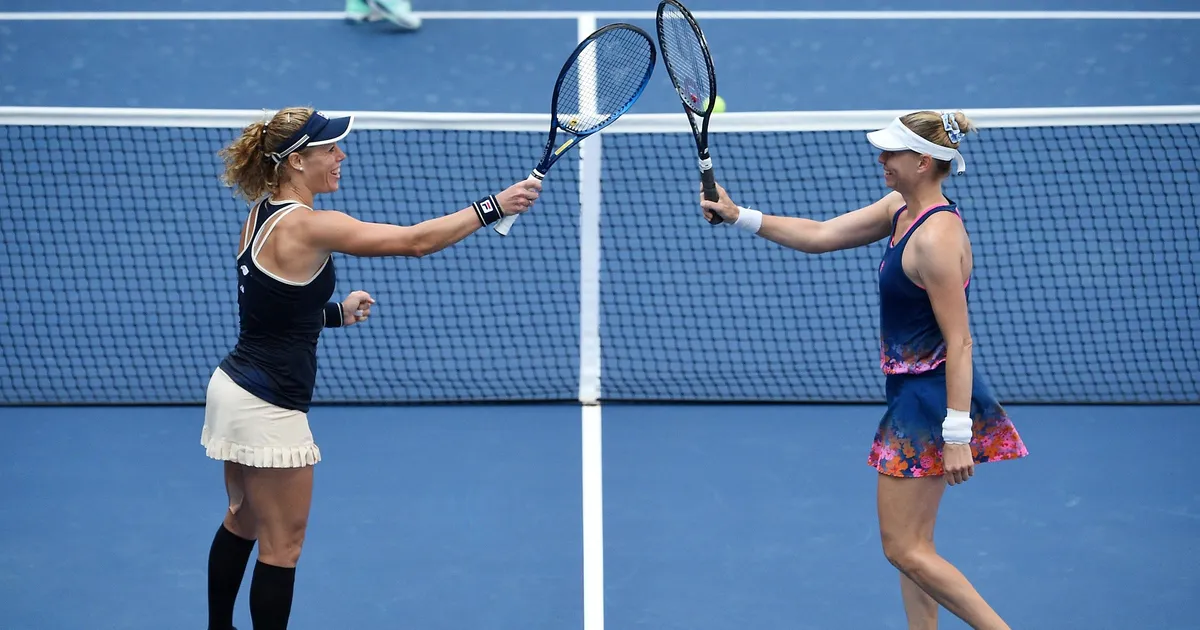As someone who has spent countless hours on the tennis court, both as a player and a spectator, the world of doubles tennis has always been particularly intriguing.
While singles tennis is often about raw power and individual prowess, this variation adds layers of coordination, teamwork, and strategy to the mix.
Allow me to share with you the mesmerizing realm of doubles tennis rules and strategies.
The Court Layout
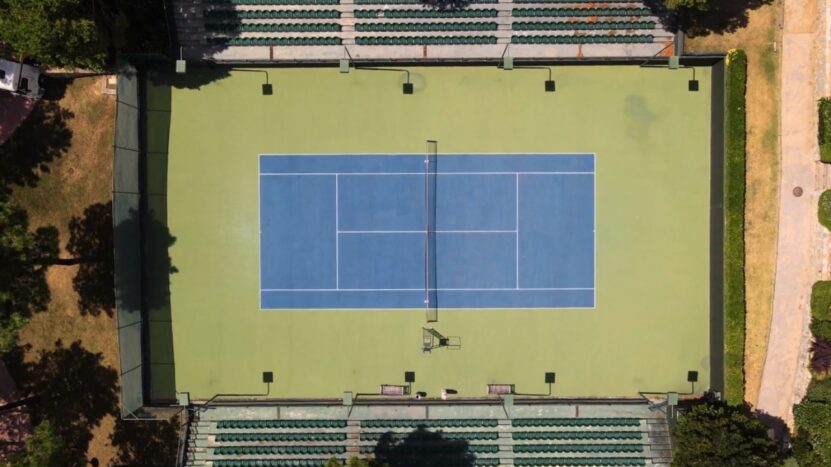
Doubles tennis is predominantly played on the same court as singles. However, the court’s dimensions come into play more frequently and distinctly.
Doubles Alley
This variation of tennis introduces an additional area of the court on each side, known as the “doubles alley” or “tramlines”. This space is considered in-play only during a doubles match, expanding the court’s width from 27 feet (singles) to 36 feet.
Service Box Differences
While the service boxes remain unchanged in their dimensions, in doubles, the receiver has the liberty to stand anywhere on their side of the court. This changes dynamics and opens up diverse strategies, especially during service returns.
Key Rules
Knowing the rules is foundational. This variation brings its own set of rules, distinct from the singles version.
Serving Rotations
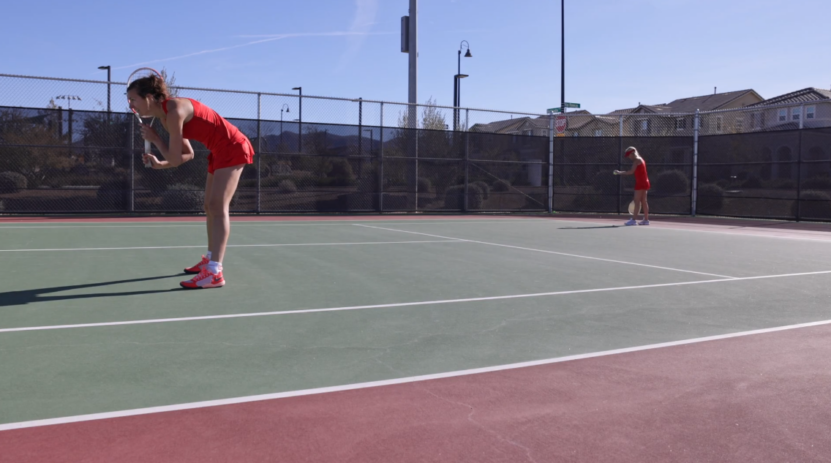
In doubles tennis, teams have to decide the order of serving before the match starts. Players alternate serves every game, not every point. After the first game of a set, the partner of the player who served the first game will serve the third game, and so on.
Receiving Rotations
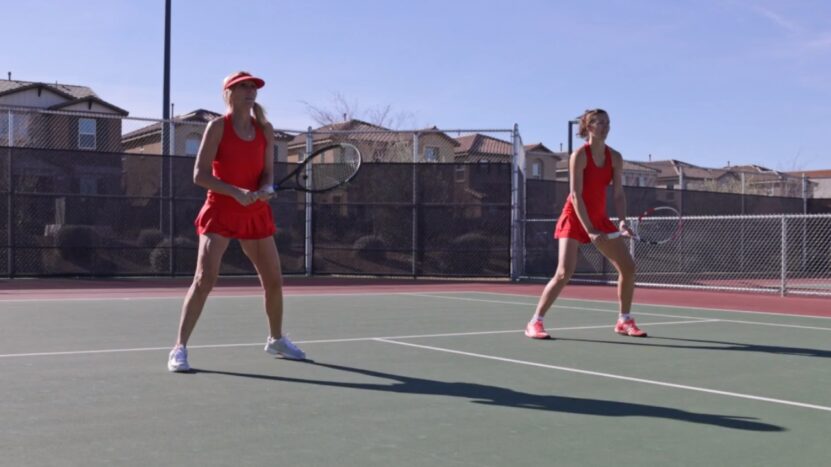
The receiving team has the flexibility to choose who will receive the service first. However, once chosen, teams must follow an alternate pattern for receiving for the remainder of the set.
A significant part of the strategy lies in choosing the right receiver based on opponents’ strengths and weaknesses.
Effective Communication
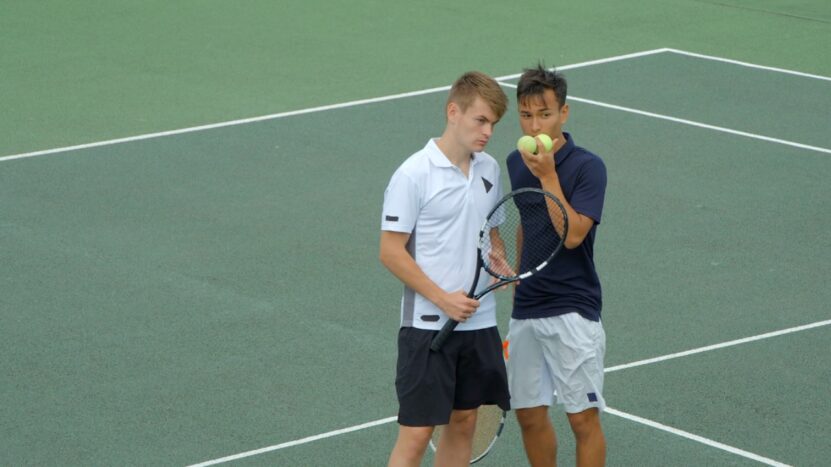
A pivotal component is the ability of partners to communicate effectively. Teams that talk, strategize, and support one another tend to be more successful.
Before each point, you’ll often witness double partners whispering to each other. They’re discussing strategy — where to serve, potential return placement, or when to attempt a poach (an aggressive play where the net player intercepts a return).
Such pre-point strategies can be game-changers.
The mental aspect of tennis is as vital as the physical game. Partners should always uplift each other, celebrate good shots, and move past mistakes. Consistent encouragement and maintaining a positive demeanor can elevate a team’s overall performance.
Mastering Court Positioning
Positioning in doubles is vital. The coordination between players determines the coverage of the court, making it hard for opponents to find open spaces.
The Classic Up-and-Back Formation
One player at the net (up) and one at the baseline (back) is a traditional positioning tactic in doubles. The net player can cut off volleys and put away points, while the baseline player covers ground strokes and lobs. This formation provides a balanced defense and offense.
Two-Up Strategy
Both players stationed at the net can exert pressure on the opposing team, reducing their reaction time. However, it leaves the court vulnerable to lobs. Teams using this strategy often have quick reflexes and excel at net volleys.
Serving Strategies
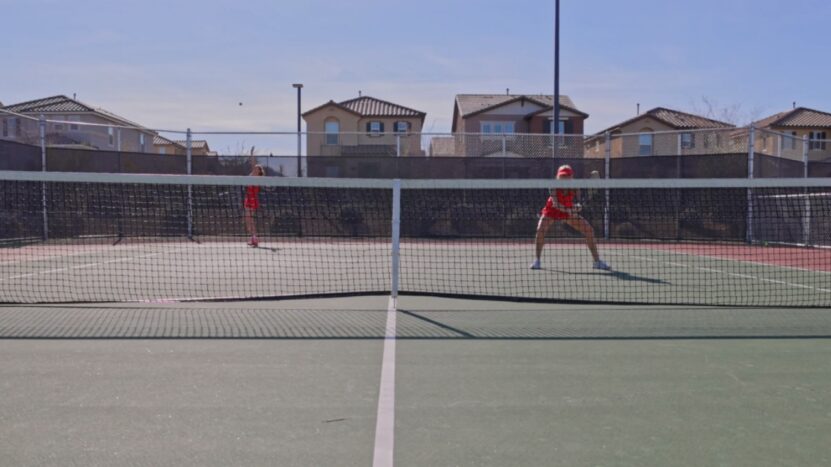
In doubles, the serve is not just about power but also placement. Effective serving can set the tone for the point and put the opposing team on the defensive.
Moreover, understanding the nuances of serving rules, including the concept of a ‘let,’ can further refine a player’s serving strategy in doubles tennis, making each serve more intentional and potentially game-changing.
Serving Wide
Serving wide, especially to the ad-court, can pull the receiver out of position. This leaves a large portion of the court exposed, allowing the server’s partner to capitalize on a weak return.
The Body Serve
Targeting the body of the receiver, especially in doubles, can be very effective. It restricts the receiver’s shot-making options, often leading to weaker returns that can be easily attacked by the net player.
Defensive Strategies
Defense is not just about returning the ball but also about anticipating opponents’ moves and covering the court efficiently.
Lobbing the Net Player
A well-executed lob can turn defense into offense. When the opponents are both at the net, a deep lob over the head of the net player can push them back, giving your team an opportunity to take control of the net.
Cross-Court Returns
A cross-court return is a safer option in doubles as it travels over the lowest part of the net and has the longest distance to cover. It also ensures that the net player on the serving team has less chance to cut off the return, keeping your team in the rally.
Poaching: A Game-Changing Move
Poaching can surprise the opponents and quickly end a point. It’s an aggressive net move that, when timed right, can be very rewarding.
The key to effective poaching is unpredictability. The net player should disguise their intention to poach, moving swiftly just as the opponent hits the ball.
Mastering some basic tennis terminology can enhance the coordination between partners, especially in maneuvers like poaching.
Timing is crucial.
When one player decides to poach, the baseline player should be ready to cover the vacated space. This coordination ensures that even if the poach is unsuccessful, the team isn’t left vulnerable to counter-attacks.
Singles Vs. Doubles Tennis
| Feature | Singles Tennis | Doubles Tennis |
|---|---|---|
| Number of Players | 1 per side (2 in total) | 2 per side (4 in total) |
| Court Width | Standard: 27 feet | Including doubles alley: 36 feet |
| Serving Rotation | The player alternates every game | Teams alternate; partners alternate every game |
| Game Strategy | Player-centric; individual skill | Team strategy; coordination is key |
| Court Coverage | The entire court is covered by one | Divided between two players; teamwork is crucial |
| Communication | Internal (with oneself) | External; continuous communication with partner |
| Returns | Anywhere on court | Usually alternate between partners |
| Court Positioning | Mostly defensive or offensive | Combination of both; one up, one back formation |
| Game Duration | Generally shorter | Might be longer due to more rallies |
| Tactic Variability | Limited by individual capability | Enhanced with combined team strengths and skills |
FAQs:
How does scoring work?
Scoring in doubles tennis follows the same structure as singles: points progress from 15 to 30, then 40, and finally, the game. If both teams reach 40-40, it’s termed ‘deuce’, and a team must win by two points to claim the game.
Sets are usually won by the first team to reach 6 games with at least a 2-game lead. The primary difference lies not in the point structure but in the gameplay and strategy due to the presence of two players on each side of the court.
For a more detailed breakdown of tennis scoring, including the intricacies of tiebreaks and advantage sets, you may want to explore our guide on how tennis is scored.
Can both players serve from the same side?
No, the serving rotation in doubles mandates that one player serves for an entire game, and then the service passes to a player from the opposing team. Within a team, players alternate the responsibility of serving with each new game.
They cannot both serve from the same side during a single game.
What happens if a served ball hits the partner of the server before landing?
If a served ball strikes the server’s partner before landing in the correct service box, it’s considered a fault. If it’s the server’s first serve, they get a second attempt. However, if it’s the server’s second serve, the serving team loses the point.
Are there any restrictions on racket size or type in doubles play?
Racket specifications play are consistent with those for singles. The International Tennis Federation (ITF) provides guidelines regarding racket size, stringing pattern, and other attributes. Most commercial rackets adhere to these standards.
Both doubles and singles players should ensure their equipment is compliant.
Can a player touch the net after the ball has passed their side in a rally?
A player cannot touch the net, net posts, or even step on the net’s side of the court while the ball is still in play, irrespective of whether it has passed its side. Doing so results in a loss of the point.
However, once the ball is dead (out of play), players may touch the net.
Final Thoughts
Reflecting upon my time on the court, I’ve always believed that doubles tennis embodies the very essence of teamwork and strategy. It’s a discipline where understanding between partners is just as vital as understanding the game itself.
As we explore the rules and strategies, it’s evident that this variation is more than just a game—it’s a dance of two players moving in perfect harmony.

